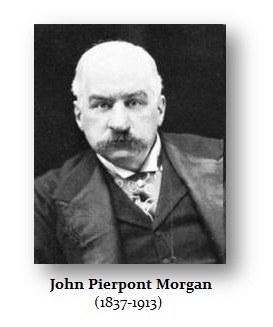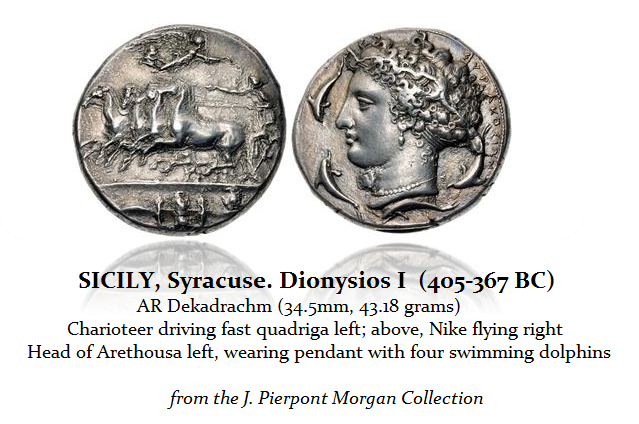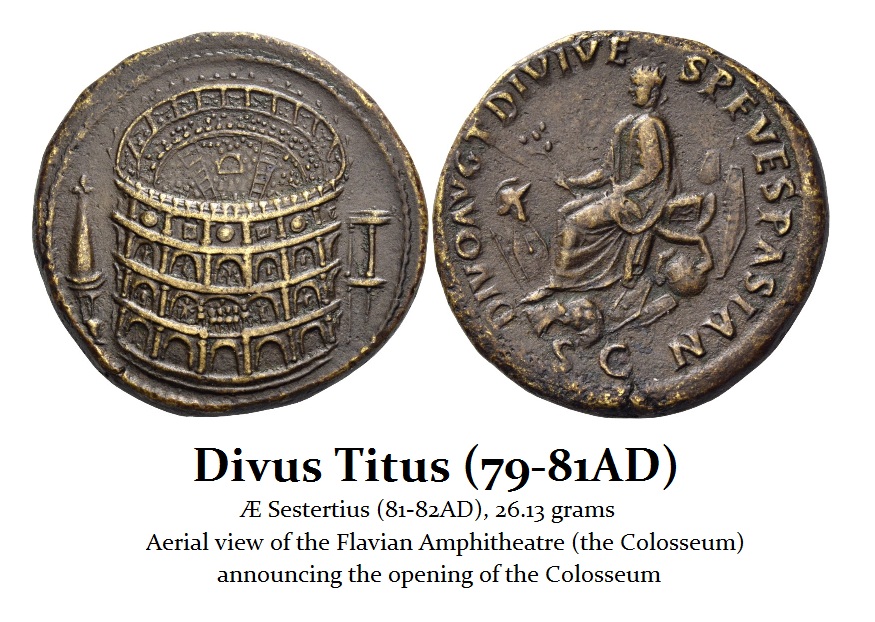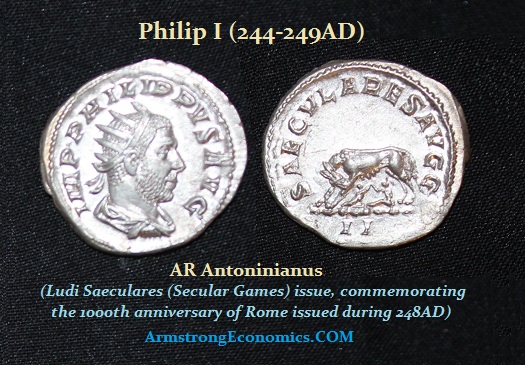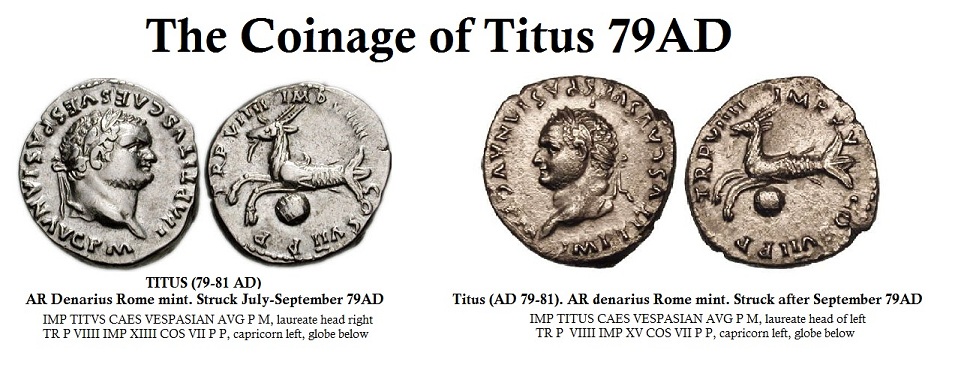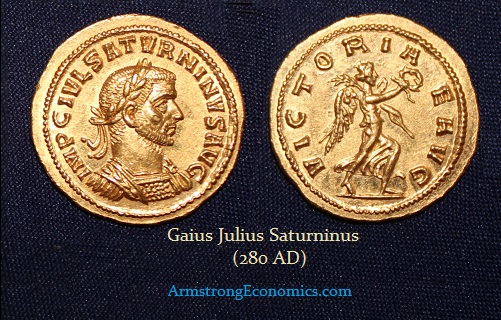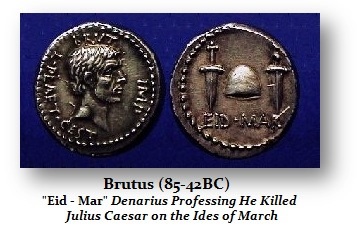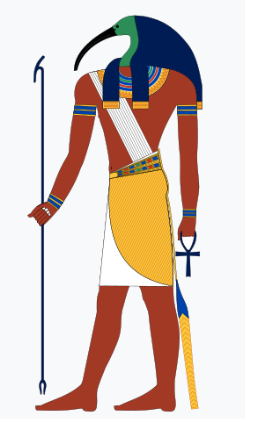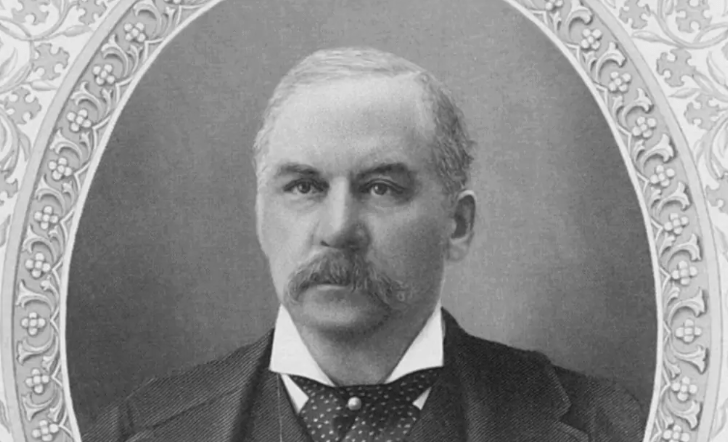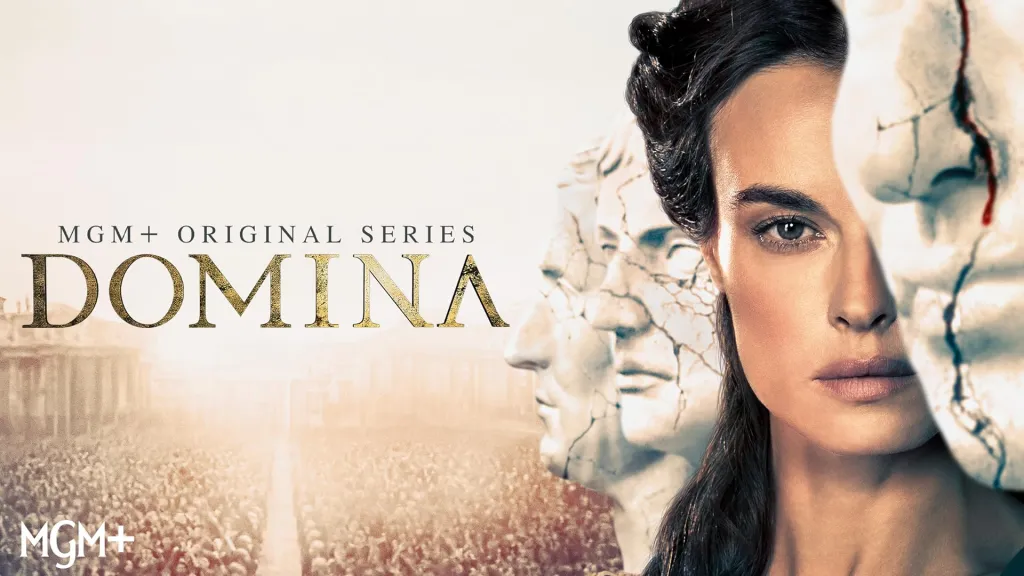QUESTION: Is it true that J.P. Morgan was also an ancient coin collector?
DV
ANSWER: Absolutely. He collected both Greek and Roman coins. This was a Syracuse Dekadrachm of Dionysios I (405-367BC). The difference between the Greeks and the Romans is quite plain. The Greeks were into art. As you can see, their coinage was often of spectacular artistic value. The coin firm Stacks of New York had auctioned off part of the collection in September 1983 which you can download that catalogue.
The Romans were more practical. They used their coinage to announce events, great accomplishments, or some military victory. Here is a coin announcing the opening of the Colosseum.
Here is a silver antoninianus issued by Philip I (The Arab) in 248AD announcing great games for the 1,000th year anniversary of the founding of Rome.
Because the Roman Emperors pretended to be elected, each year noting their titles, it enables us to date the coins annually. Because one coin was discovered in Pompeii, it rewrote history. It was then possible to actually date the event from a coin.
Likewise, the discovery of this coin in Egypt with the inscription of an emperor Saturninus, clearly proved that the academics were all wrong and that the book Historia Augusta was in fact correct – not some story written for children. They said the same thing about Homer until the discovery of Troy, Mycenae, Thebes, etc.
We know that Julius Caesar was in fact assassinated on the Ides of March (15th) in 44BC because Brutus bragged about killing Caesar on his coinage. The statement “EID MAR” meant that he killed him on the Ides of March.
J.P. Morgan loved history. But so did many other investment bankers, dukes, and even kings. There were often royal collections as well.

